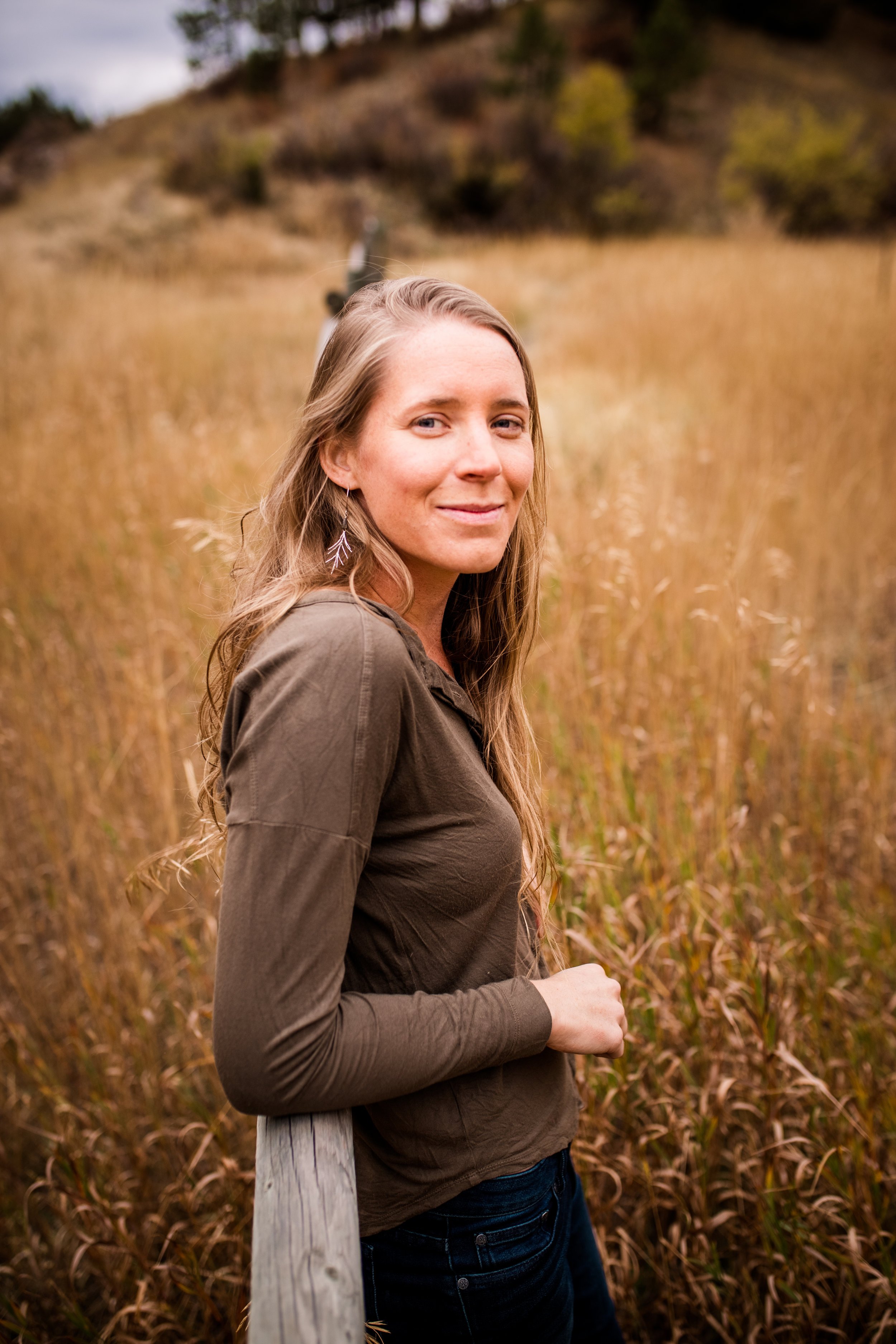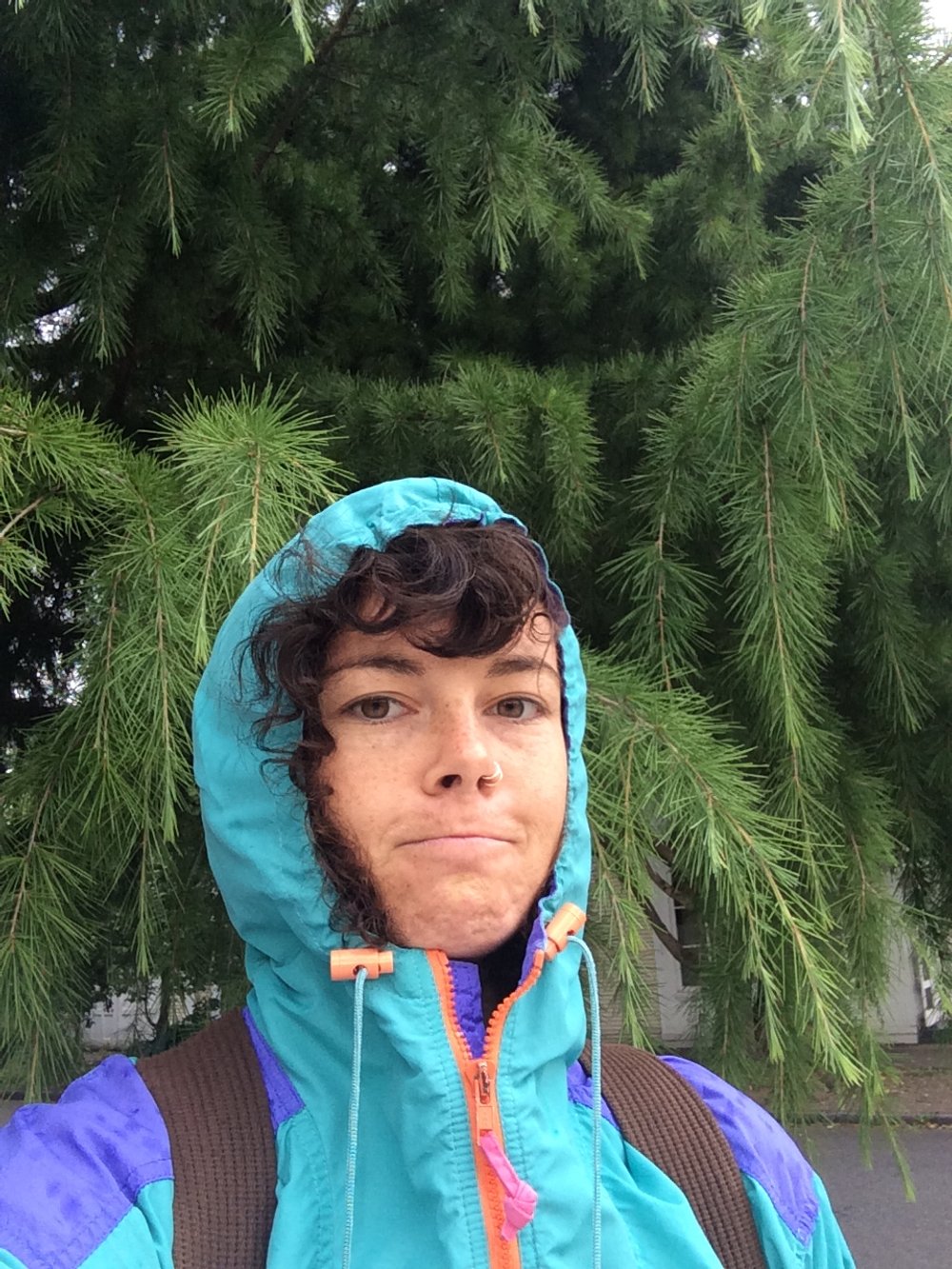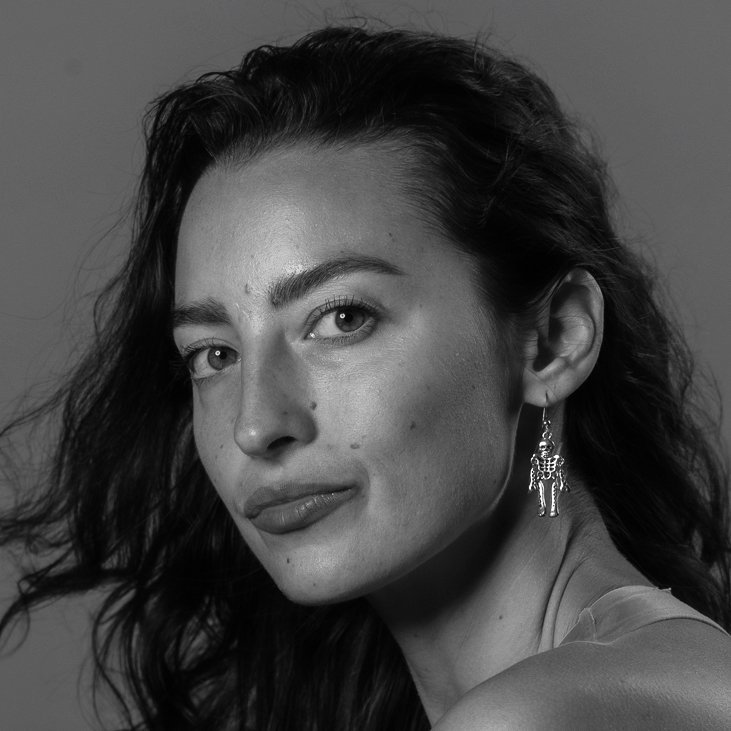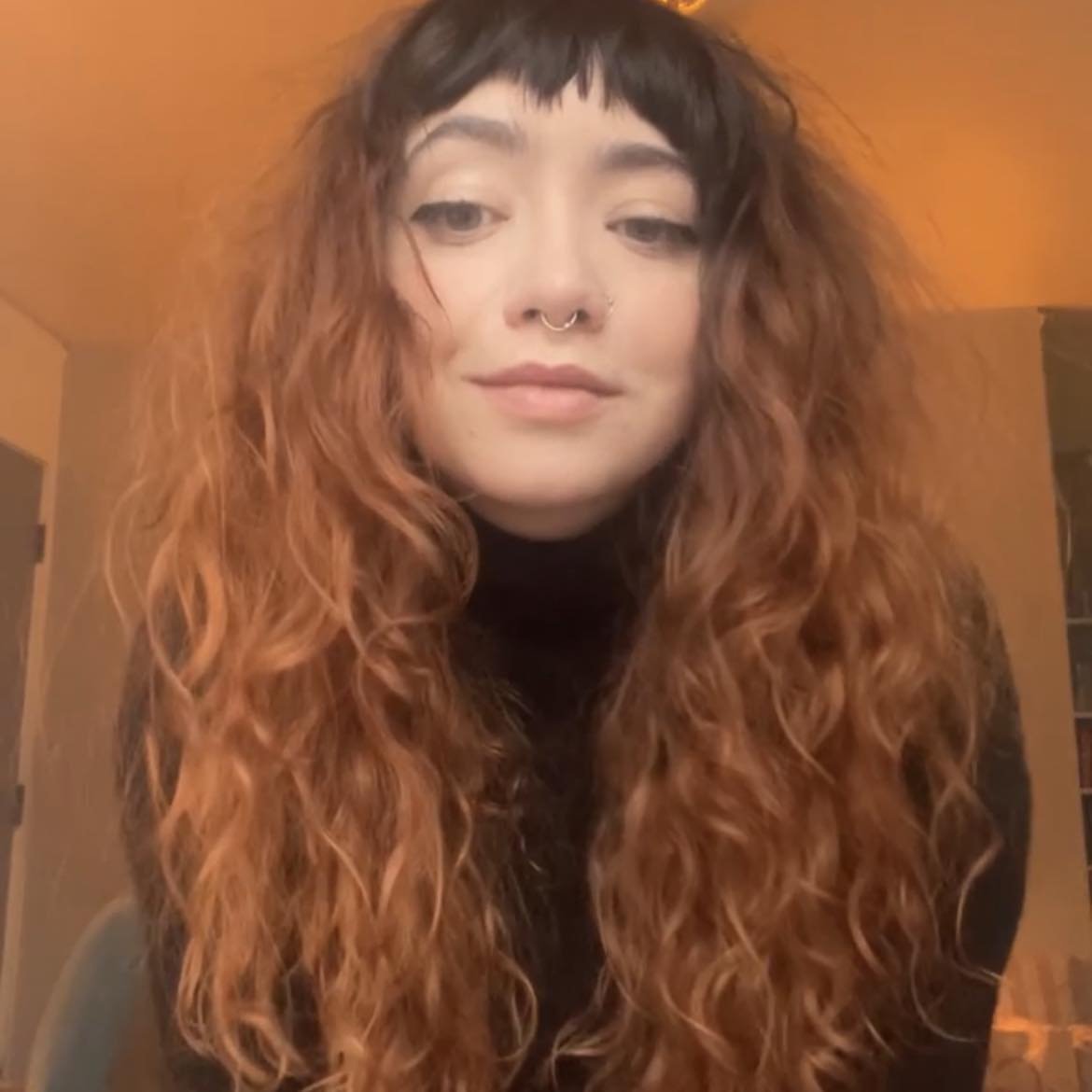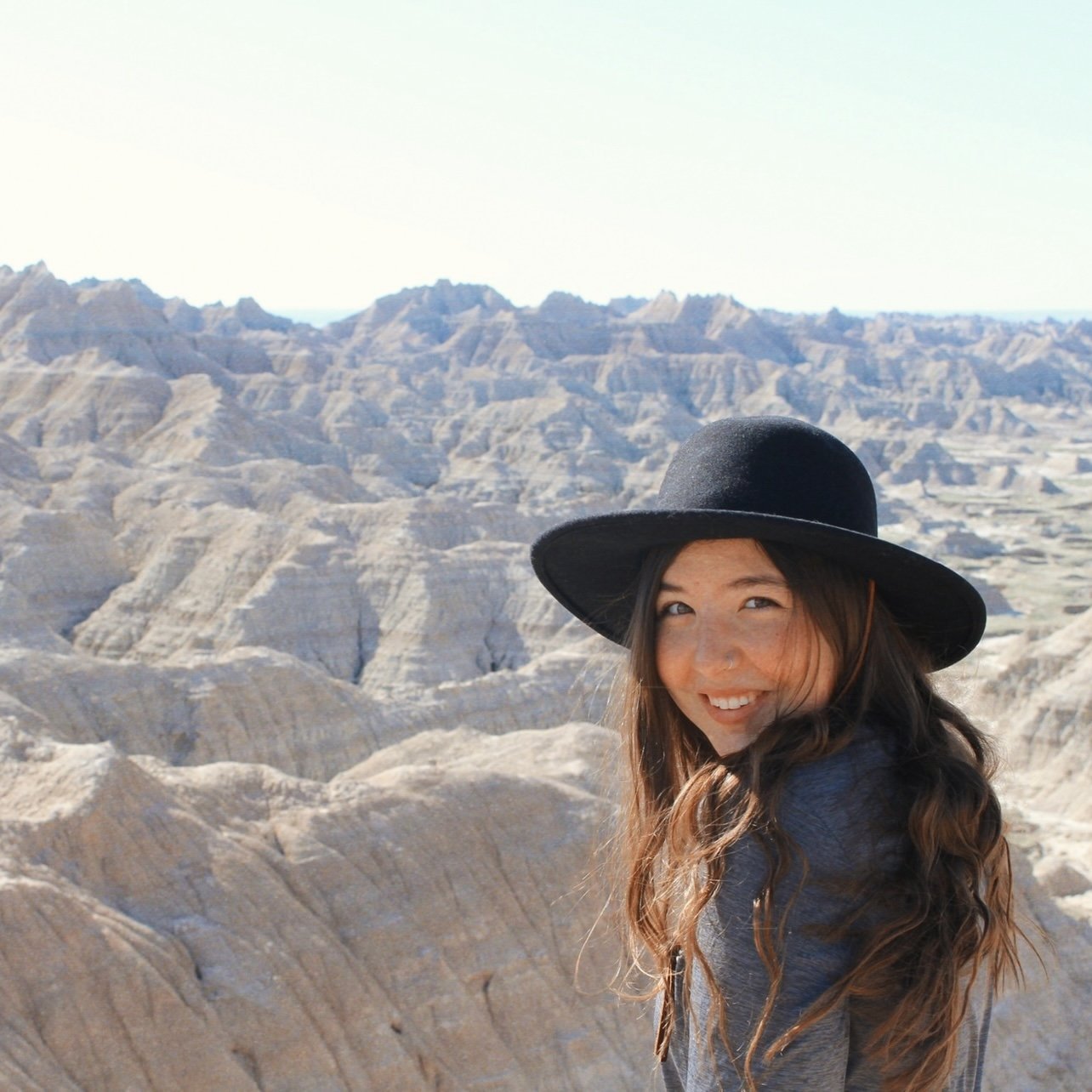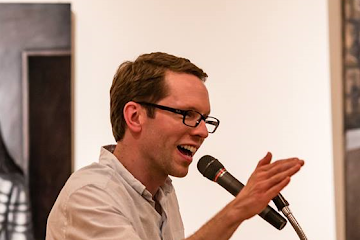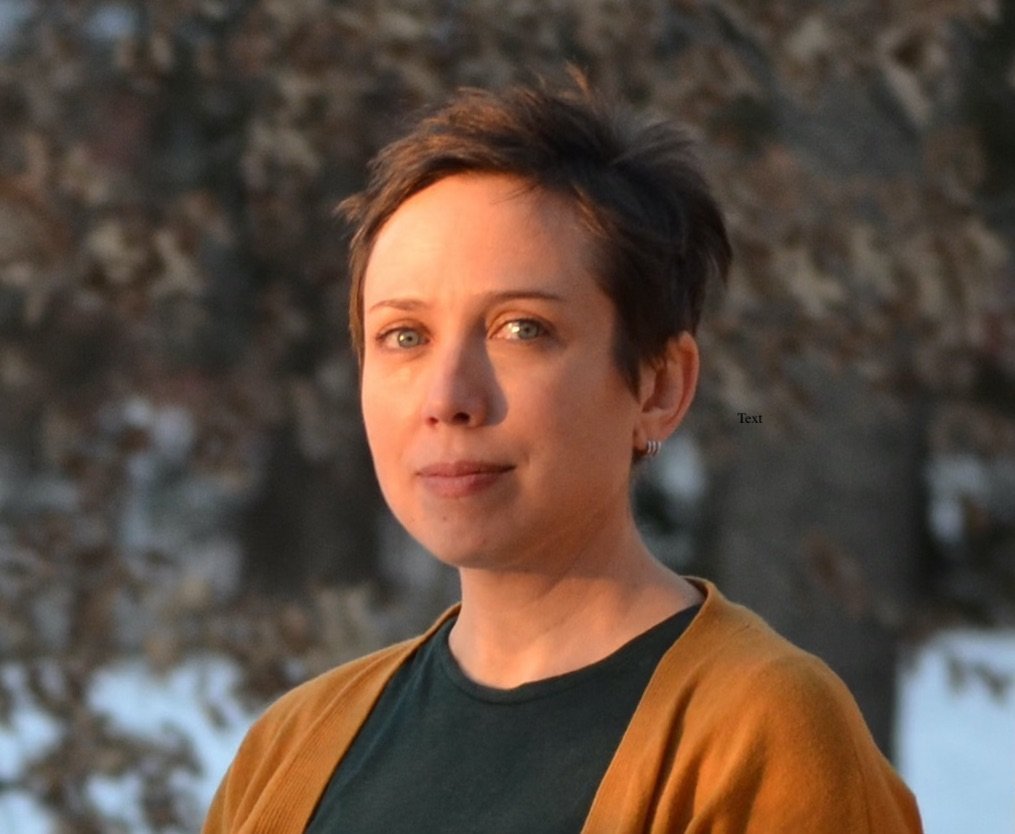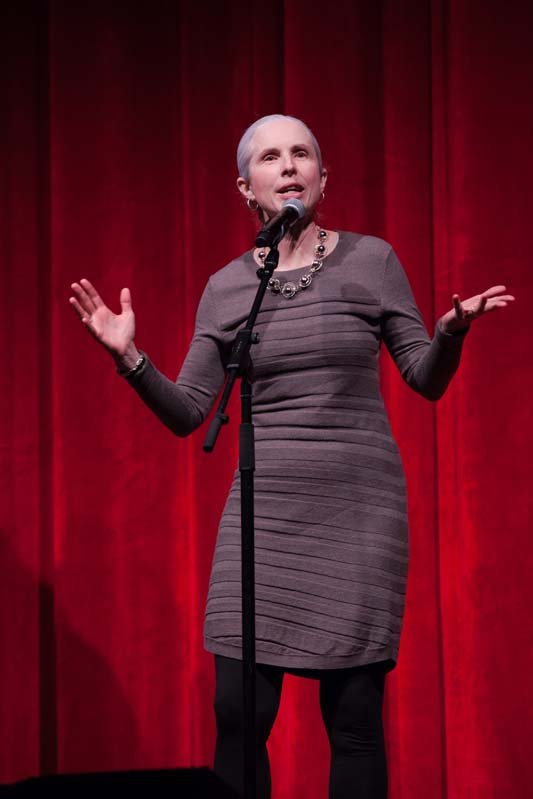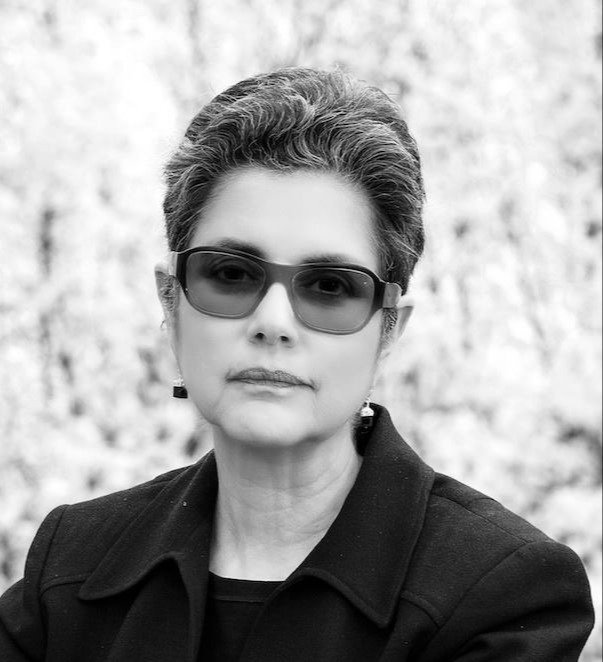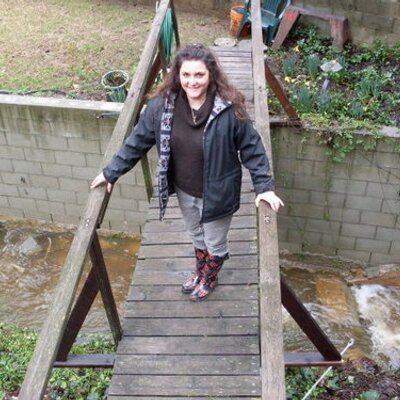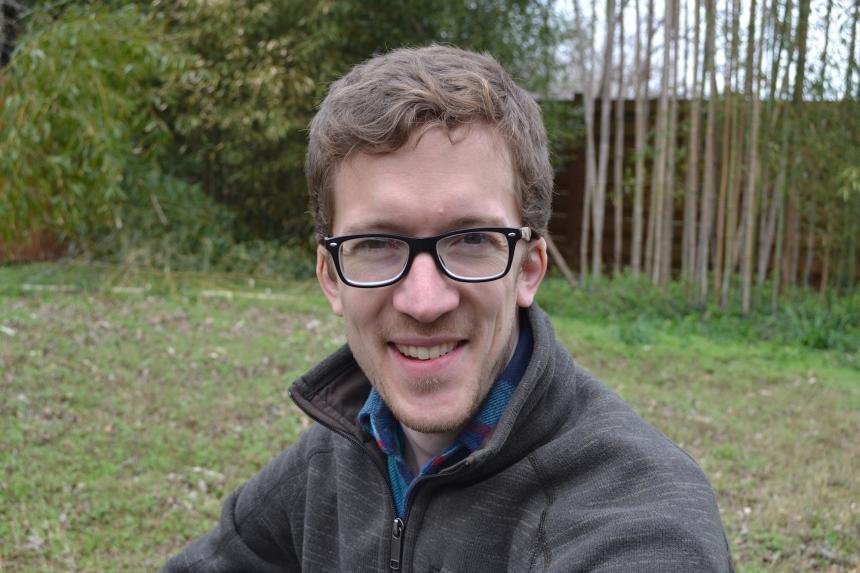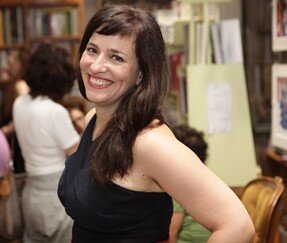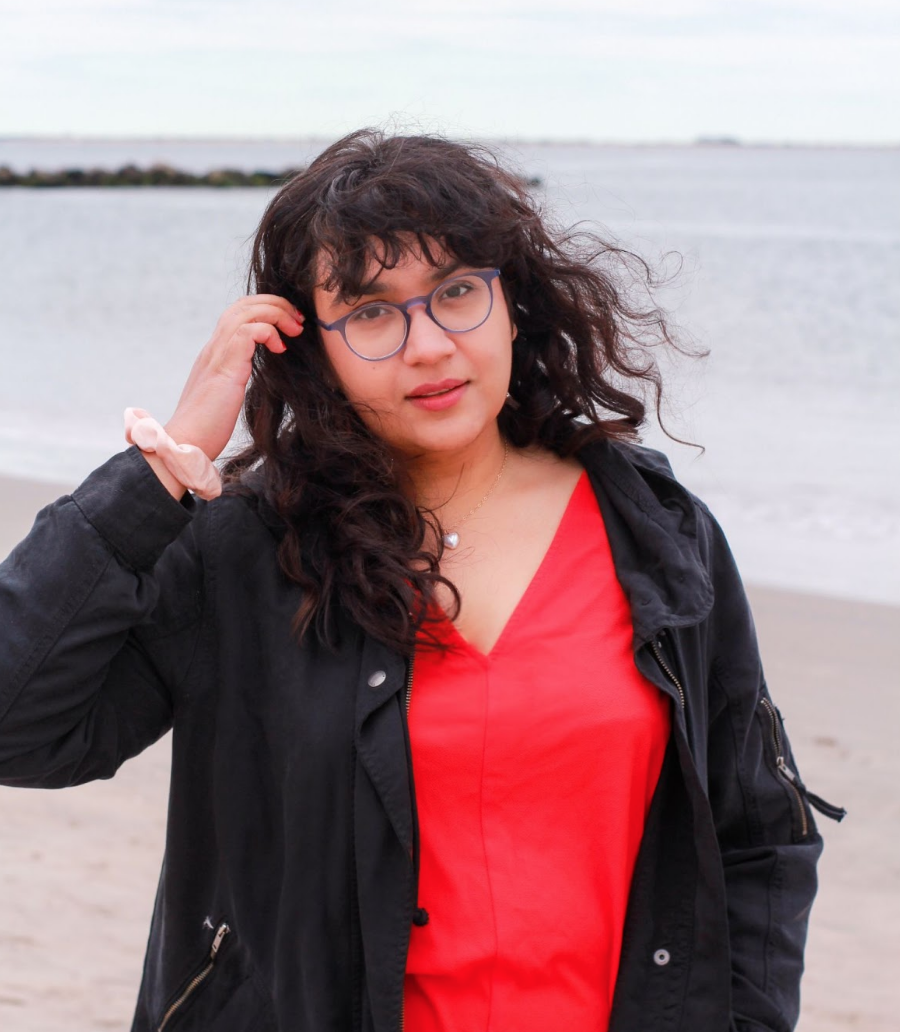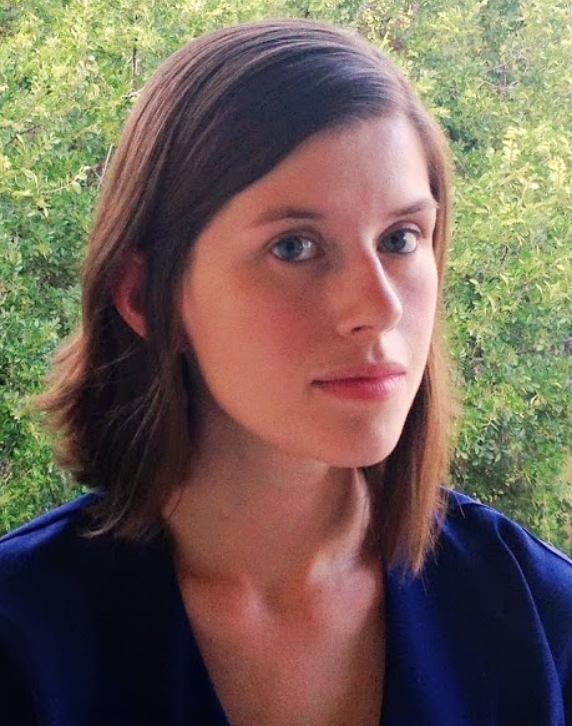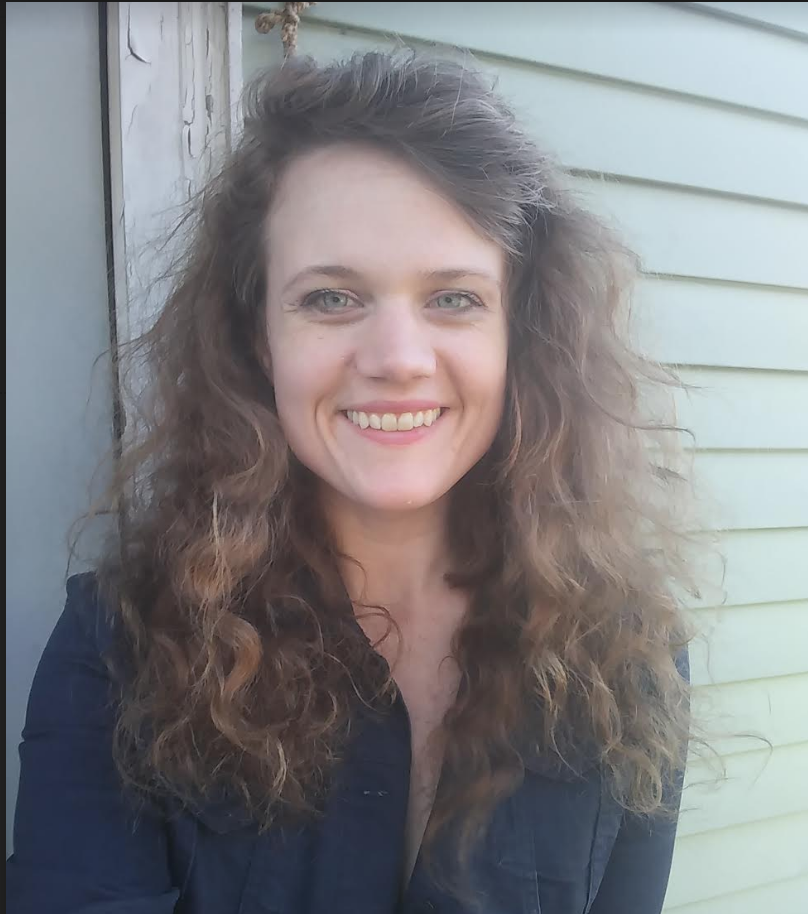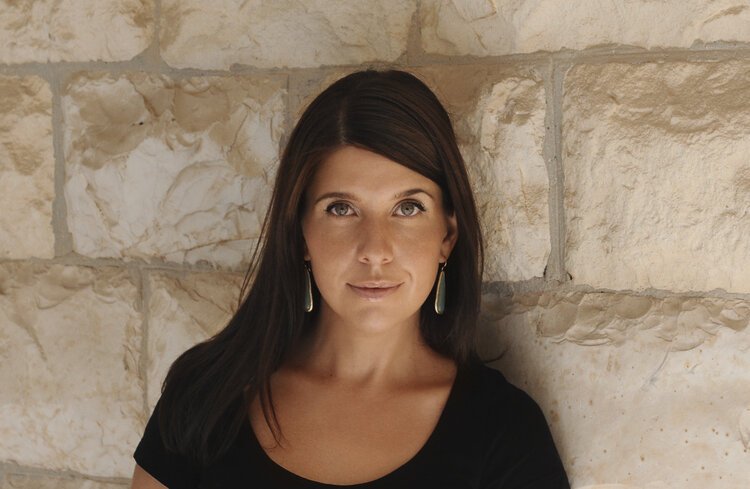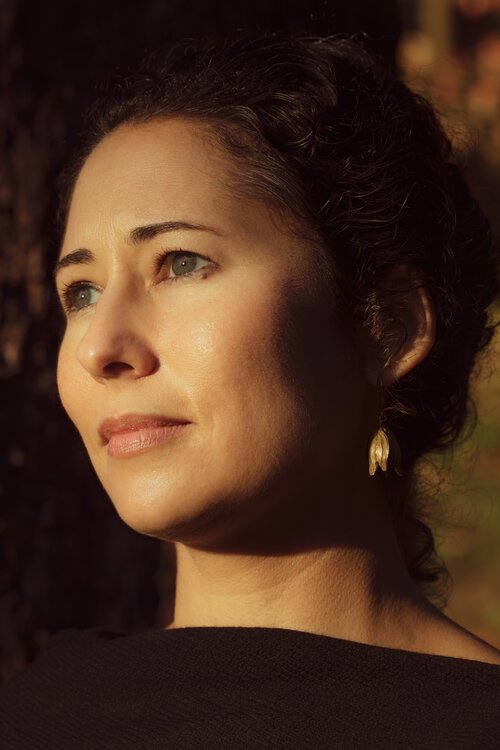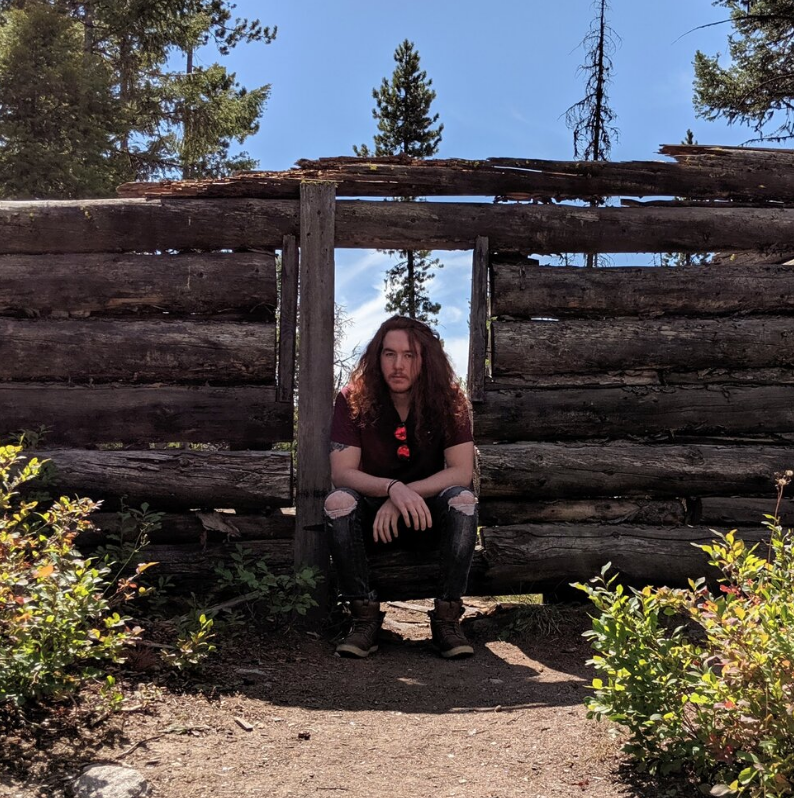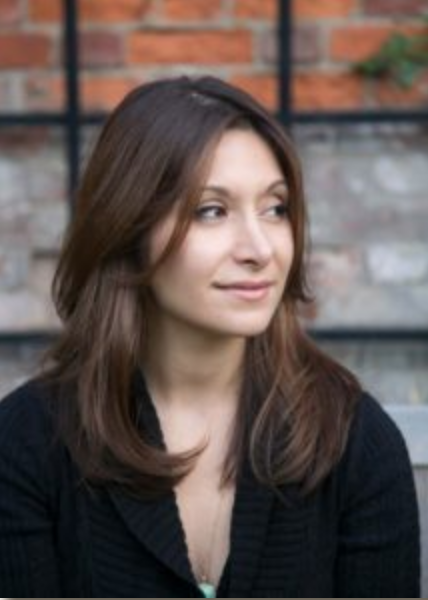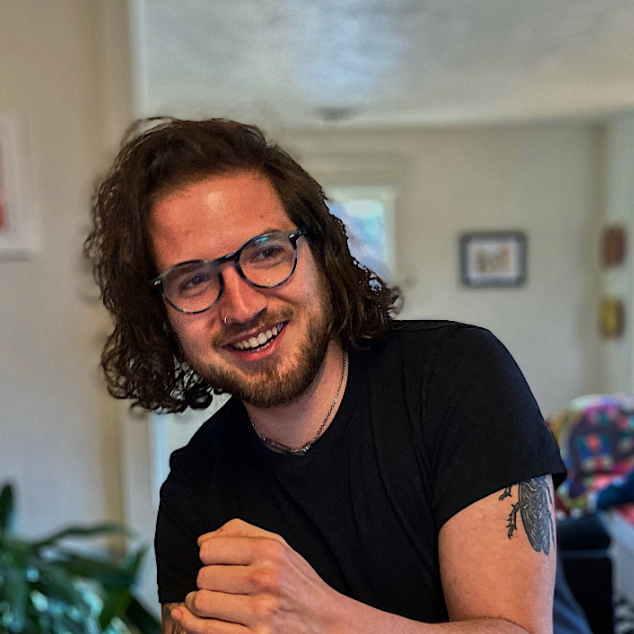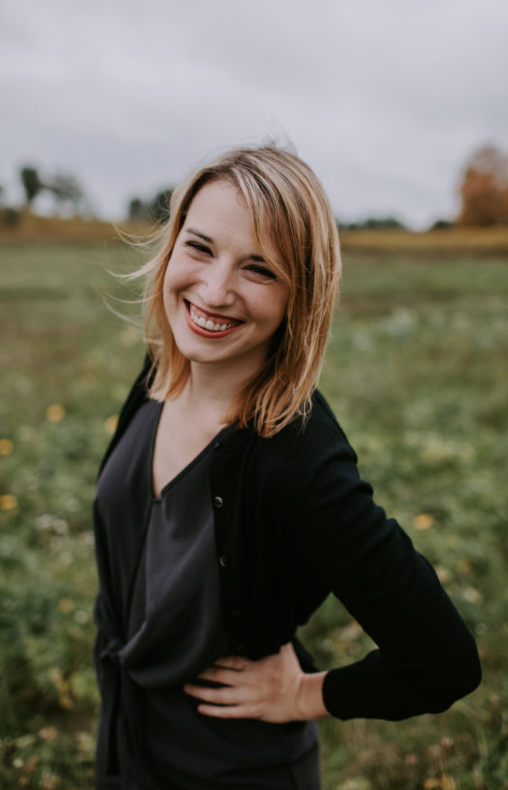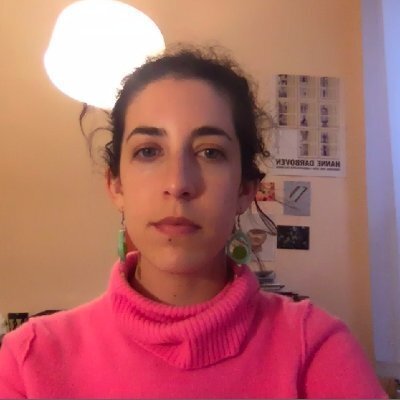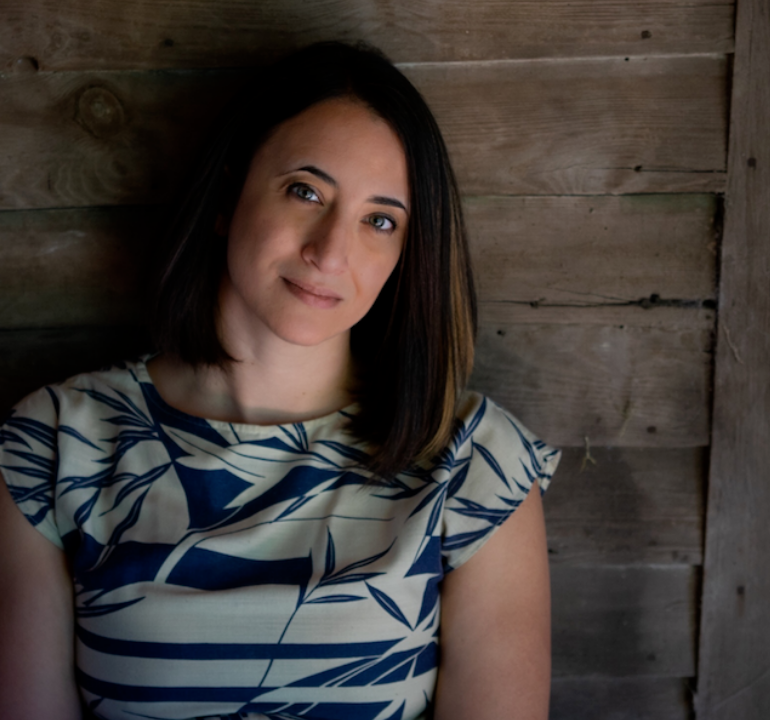CutBank Interviews: A Conversation with Keetje Kuipers
by Emily Collins
In Keetje Kuipers’s poem “After My Shower, a Bee at the Window,” the narrator says, “My own mirror fogged with steam, I lean in/for a look: It likes to tell me I’m young, / but without the wink and nod of glass, I / know my body is close to learning some/new thing about itself.” This longing and expectation of transformation excites and terrifies me. There’s nothing about ourselves that hasn’t been touched by experience, and yet we have no hope of accessing the benefits of experience without fierce introspection. Though the arc of Kuipers’s work differs thematically and tonally, each collection seems to spiral deeper into the self through gorgeous language dripping with wry and sincere emotional truths.
Keetje Kuipers is an award-winning poet and Visiting Professor of Creative Writing at the University of Montana. She’s the author of three books of poems all from BOA Editions and was appointed Editor of Poetry Northwest in 2020. In addition, her poems have appeared in The Pushcart Prize and Best American Poetry anthologies. She earned her MFA in poetry from the University of Oregon and is a former Stegner Fellow.
The following interview was conducted via Zoom where Keetje and I discussed transformations, creative risk, and performance on and off the page.
Emily Collins: So much of your work has a defiant sense of belonging and transience. I’m reminded of Maya Angelou’s famous line, “I belong everywhere and nowhere.” Can you speak to how you reconcile place, connection, and transformation in your work?
Keetje Kuipers: This idea of a “defiant sense of belonging” is really interesting to me because I don’t feel as though there have been many places where I have belonged. I think part of that has to do with my identity as a queer person, but I think it also has to do with having to move around so much for writing fellowships and jobs, and even before that in my childhood and when I crossed the country for college. So I think a sense of displacement and adaptation—and being a perennial outsider—are at the heart of my writing. And that’s where landscape becomes a really useful tool for me in my work.
My writing is deeply influenced by place, but also by being outside of my place. So, like me, my writing is fairly oppositional—I’m often reaching for a landscape or a voice or an experience in direct contrast to whatever I am surrounded by at the moment. I’m thinking of fifteen years ago, when I moved to Montana for the first time while in-between fellowships and short-term gigs. I got familiar with the strong and potent creative writing program here in Missoula through writer friends I made in the community, and I was so grateful to be welcomed in by that warm and vibrant group. But the aesthetic in the poetry program at the time was pretty different from the aesthetic at the University of Oregon, where I had just come from, so once again I was kind of the outsider and not really a part of that school of craft. I remember longing to belong to that new-to-me style that I was just beginning to learn about, and also simultaneously feeling my own strong resistance to blending in and becoming a part of something. I wanted my own voice, my own meter, and having a different aesthetic to push against actually made it more possible for me to stay true to that voice of my own that I was still crafting.
Like I said, I’ve had to move around and reinvent myself so much. My last book was written when I was living in Alabama as a queer single mother by choice. Even though I don’t have a lot of poems about the act of performance, I think the act of writing a poem is performance. I’ve certainly had to perform my identity differently in various places. So, there’s something about that performance on the page and off that page that fascinates me. I write out of that impulse a lot.
EC: Out of curiosity, what was the aesthetic like in the UM MFA in poetry program at that time?
KK: Because I wasn’t in the program, I don’t feel like I can speak to it too much, but I’ll start by saying the University of Oregon’s poetry program was very narrative. Storytelling was a big part of that program’s ethos. They wanted us to explore the narrative purpose of a poem, how we can connect to people through poetry in a particular way that has to do with our stories and storytelling. The work coming out of the University of Montana during that time did not, or so it seemed to me, have much of a faithfulness to story, which is interesting because that’s not the history of this program. I mean Dick Hugo, he’s sort of the bedrock of UM’s poetry program and his work is extremely narrative. Not all the narratives are true of course, but those poems are still very much rooted in storytelling and place and characters. So, it was an interesting time for the program at the University of Montana and it produced some absolutely incredible poets.
Brandon Shimoda was here, a phenomenal poet who recently received a Whiting Award. He writes really compelling and surprising poetry that deals with family, history, and legacy in the West and the internment of Japanese Americans during WWII. But the way he approaches that material is not maybe in the familiar way you would approach that narrative. i.e. “My grandfather told me a story about this experience…” It’s highly lyric and avant-garde. That was the aesthetic I witnessed as I became close to the people in the program at that time. I found it really intimidating because that wasn’t what I had studied and explored. It struck me as this foreign language that I didn’t really know how to speak.
But as people are in Missoula, both the students and MFA faculty were very gracious. They welcomed me into that community, and I think that’s pretty unusual. A lot of times MFA programs within a city’s larger writing community can be extremely insular and not have a lot of back and forth with the readers and writers who are living in the same place but not affiliated with the program. One of the special things about the program here is that the door isn’t closed for writers not enrolled or teaching in the program. There’s a lot of back and forth between the program and the community, which is particularly excellent here because Missoula is such a rich writing community. There are so many workshops, like Beargrass, and writing spaces, like Aerie, happening in Missoula outside of the program. It’s truly wonderful for everyone to be able to take advantage of that cross-pollination.
EC: It’s interesting to hear how certain aesthetics evolved in the program. I know that when I was exploring MFA programs, I was drawn to UM because the fiction program has produced great writers that are stylistically so different from one another. I knew I wouldn’t be limited by or sworn into a particular aesthetic. I like hearing about how UM poetry alums have written lyric poetry in a way that transcends the self and interiority.
KK: I think the growth of aesthetics broadens and widens over time. Documentary poetics is an outgrowth of poetry of witness, but they’re seen as very different from one another. I think Brandon was creating these pieces that in a way might fit into documentary poetics or might fit into witness or collage. He was inventing for himself those elements even before they existed as a hyper-codified aesthetic now.
EC: As a poet, do you ever feel daunted by all these codified aesthetics? I’d imagine they could limit and free a writer at once.
KK: I used to worry about it much more when I was younger—as if I had to choose an allegiance, which, of course, is ridiculous. If you’re not growing and changing as a writer, that’s a much bigger worry you should have.
But I want to go back to this idea you brought up about programs having different aesthetics. The best programs are the ones where the faculty don’t have a particular aesthetic agenda. I can say for myself that I want my students to write their best piece, not my version of how I would write their work. However, no matter your philosophy, aesthetic preferences still creep in. One of the things that was surprising to me coming out of my MFA program was the books my professors were suggesting that I read: I thought these books were the books being recommended at all MFA programs. I didn’t realize that what I was being turned on to were particular favorites from particular sets of tastes! My professors wanted me to read Larry Levis and Phil Levine—who I do adore—but these weren’t the same names being given out at, say, Iowa or NYU or UVA. I think sometimes we assume that our professors are giving us the absolute best writing, but everyone is working from a very different personal canon. Students at other schools were reading Anne Carson or John Ashbery, but I wasn’t. I was reading Larry Levis. It was mind-blowing to come out of my program and realize that there’s a whole different reading list someplace else. That’s something that, in many ways, can’t be helped, though it’s good to be aware of as both a professor and a student. And I do try to read very widely, and thereby suggest writers and books to my students who may not be my own favorite writers but who I think will have something particular to offer to my students.
EC: I love this idea of not having an aesthetic agenda. I don’t think professors and writers always see that their aesthetics can come with an agenda. I always appreciate reading recommendations. Beloved readings lists are like this aesthetic lineage that writers/professors feel called to pass down. Maybe those recommendations will guide the writer in a helpful direction, maybe not. Whenever I assess work, I try to be as holistic as possible.
KK: I’m trying right now to embrace work that makes me really uncomfortable. Part of that is my work as Editor for Poetry Northwest. When I took over that role last January, I knew I wanted to accept poems that were not perfect. The way that I described it to my staff is that we’re looking for poems that might have a scar or a limp or a bruise but that also have a pulse. I want work that’s alive and not airbrushed. Sometimes those poems make me uncomfortable because I ask myself, “Are you allowed to do that in a poem?” But I’ve realized that I’m more interested in poems that take risks and really go for it, rather than poems that play it safe or do something that we’ve seen a lot of times. Risk can be emotional, aesthetic, formal, whatever it is that makes the reader uncomfortable. I look for this in my student’s work too. I ask them, “Are you making yourself uncomfortable?” As we talk a lot about in fiction, what are the stakes? Poems have stakes too, especially formal stakes, which I think sometimes can get forgotten.
EC: On the subject of risk, I’m curious to hear about your poetic and non-poetic influences. Have your influences changed over the years or do you have any lifelong favorites? Is there a risk-element to these writers’ work?
KK: Marilyn Hacker’s book Love, Death, and The Changing of the Seasons has had a profound influence on me since I first encountered it in undergrad. It’s a book-length sonnet sequence that tells the story of the speaker’s love affair with a much younger woman. It’s risky in so many ways. It’s risky in being a formal throwback. It’s risky in being a book-length sequence. It’s risky in being a love affair. The book’s had a lasting influence on me in terms of form, subject matter, and theme. It seems silly to say, “It’s risky to write a sonnet.” But to take an older form and really make it new the way Hacker does is a risk, and especially to do so in a way that applies pressure to the form over and over again. She’s done that with a lot of other forms as well, and not just once, but repeatedly, returning to various forms and delving into them in earnest again and again.
I think dabbling in form is a pleasurable place to go as an artist, one that can enliven the forms most familiar to you with a new vigor. But to say I’m going to dedicate myself to this form, and then become a real practitioner of that form is inherently risky. I see more poets writing their own forms. I’m writing books that are full of them too. And that’s exciting in its own way, but somehow less risky, perhaps, than seeing if you have the stamina to maintain a much older form. I mean, what made Hacker think that an older lesbian’s body belonged in a Shakespearean sonnet? What incredible strength and daring and confidence to take ownership of that.
EC: I love this idea of form, tradition, and stamina as being key ingredients to artistic risk. I know that I and other young writers I know have felt alienated by forms, structures, techniques etc. that we first encountered in school. But surrendering to form is really interesting to me. I think working with structure in the way you’re describing can deepen and enrich overlooked lives and histories.
KK: Yes, absolutely.
EC: In All Its Charms your poems grapple with time and identities we must put to rest so we can transform. Many of the poems have a sense of surrender and forgiveness as well. Is forgiveness a theme you continue to explore in your poetry and prose?
KK: When I think of a collection of books, I ask myself, “What is the arc of these collections?” If you were to line them up in chronological order, what story are they telling? It doesn’t have to be the story of the poet’s life necessarily, but what are the themes these collections continue to explore? Many times there are gaps in those arcs. Sometimes they are not arcs at all, they’re circles or an act of return.
For me there’s a real connection between All Its Charms and my second book The Keys to The Jail in that the former lands, finally, in a place of forgiveness. My second book was really a place of self-blame. I went from writing that type of book to one more closely tied to forgiving the self. The Keys to the Jail ends with poems called, “A Beautiful Night for the Rodeo” and “Jonathan Plays in the Key of E,” and both of those poems end with begrudging forgiveness. I could see that at the end of that book I was moving more towards that place. The Keys to the Jail is a really hard book for me to go back to because the person who lives in those poems, a person who doesn’t exist anymore, is someone I feel really bad for. That person was really struggling in her life and had a lot of heartbreak and not a lot of patience for herself and what she saw as her own failures. The poems in All Its Charms have forgiveness in them, but they’re not so begrudging. They’re more in wonderment and surprise that forgiveness is possible and that joy is on the other side of forgiveness. I think that was the arc of transformation that had to happen with that book in particular.
Similarly, in All Its Charms there are emerging themes that are not central to that book, but that I’m now exploring more in my current work. The poems I’m writing now are not about forgiveness at all. On the surface they’re about marriage and family, but underneath they’re about desire and ambivalence. They have a lot of magic in them as well, which is new for me. Magical realism isn’t something I’ve really explored before. It’s exciting because if the last book is about transformation, then this book will take that even further. There’s the surprise and wonderment of your life turning out differently than you thought it would, and then there’s the act of transformation by imagining what your life could become—and maybe by imagining it, it will come true. Some of the poems I’m writing now are sort of a spell or incantation for that future.
Even though my work is doing things it hasn’t done before, I feel like this current book is more like first book than anything I’ve written since. In many ways it’s a return to some of the core elements of the work I was doing coming out of my MFA program. I’m returning to a sense of wildness and free verse that may not feel very different to the reader, but it feels very different to me in terms of process and the way I’m approaching revision. After years of making sure my poems fit imagistically and lyrically—a kind of poetry sudoku—I’m now allowing myself to let in words that feel wrong or images that don’t belong to the world of the poem. There’s now more wildness, freedom, and irregularities. Obviously, I’m having a blast.
EC: Another thing I love about your work is its focus on social justice. As writers, I don’t think we can write about love and forgiveness without also writing about destruction of all kinds. As a poet with privilege, how do you approach racial and environmental injustices without leaning on reductive shame and guilt? These are things I ask of myself as well.
KK: It’s such an interesting question because I think the only way to authentically engage with issues of social justice is to engage through the self. At the same time, to center the self in a poem that wants to enact change & transformation within the world of the poem and outside of it, is really hard to do if that self is speaking from a place of historical and enduring privilege. To write from the self and decenter the self at the same time has built-in limitations you can’t ever really overcome. I edit a series over at Poetry Northwest called “On Failure” and my introduction to that series talks about trying to write those kinds of poems.
If we’re after perfect work where we can pat ourselves on the back and say Oh look at me I’m so woke in these various ways, and I wrote a poem that got that performative wokeness ‘right,’ then we’ve truly lost the point of making work that engages with systemic change. On the other hand, the point of making that kind of work is not self-flagellation either, or performances of shame and guilt, which of course are just another way of trying to get it ‘right’ and pat ourselves on the back.
I think instead the point of the work is to enact on the page the limitations of empathy and compassion. And the limitations of an imagination, heart, and mind that wants to engage with social justice work. I’m more interested in trying to do that work and falling short than I am with achieving something particular on the page.
There’s a book I’m really looking forward to reading by Paisely Rekdal called Appropriate that’s forthcoming this spring. In the book, she explores how we might write towards other people’s experiences in a way that’s ethical and authentic. She’s such an exciting thinker, and this book is really needed right now. I have so many students who want to write towards social justice movements and the atrocities they know are committed in their country and world every day, horrors that they have a historical and present-day awareness of. But how do we do that? Paisely’s book is going to fill a real gap in terms of how literature can enter that conversation.
EC: I’d love to hear any updates on your memoir about living off the grid as a Margery Davis Boyden Wilderness Writing Resident?
KK: It’s a project I think will take me my whole life to write. For me, memoir is the most difficult form to work in. With poetry, I feel so much freedom in terms of the voice I can use. I don’t have to be one single person. There is such permission to be multitudinous and to have the freedom to move among those multitudes. In fiction, of course, there’s so much freedom and play in different characters and voices you get to occupy or examine.
In nonfiction—even though we all acknowledge that what we read is only a portion of the story and one lens—there is a necessity for continuity of voice, and I struggle with that. I don’t know which girl or woman to be when I perform myself on the page in that way. To have the kind of perspective and dissonance that I might need to write that story will likely take years and years to write.
I did the Margery Davis Boyden Wilderness Writing Residency about fifteen years ago, and I don’t think I’ve yet to see the effects of it fully play out in my life. The legacy of that residency was a willingness to take a risk as myself. There were so many things that were intimidating and challenging about taking that on. I applied for it not really thinking about getting it. I’d stretched my application a little bit and said that I was more outdoorsy than I really was. When I got it, I was really surprised and a little freaked out. A number of us who have passed through Missoula have done that residency. Erin Saldin did that residency a few years after me. Henrietta Goodman, a poet in Missoula, did that residency before me. There are a lot of us who sort of come together and can talk about the similarities in our experiences living off the grid as women living two hours down a dirt road from the nearest town. I think those experiences are going to play out our whole lives and leave a mark forever. Maybe when I’m an old, old woman, I’ll finish that book.
EC: Perhaps the arc of your work could help you find that voice.
KK: I think that’s part of it. I don’t yet understand who the woman is who wants to reflect on her experience. Is it a woman who’s forgiven herself? Who is she? I think a lot about Cheryl Strayed’s Wild. She wrote that many years after her experience hiking on her own, but she found the lens which was a lens of self-forgiveness and triumph. I just don’t think that’s my lens for this book. I think that the residency gave me the courage to choose a path, again and again, that is not the one of least resistance, in terms of becoming a single mother by choice, marrying my wife, and leaving a tenured job in a place where I couldn’t thrive. Perhaps one day I will really be able to see what happened at the residency to make that courageous version of myself possible.
EC: I’ve heard wonderful things about how you structure workshops. I hear that the writer being workshopped can choose a workshop experience that’s either all praise or critique. How did you arrive at this format and what can a work in progress gain from these experiences?
KK: This idea was given to me by my friend and poet Erika Meitner who does this with her workshops as well. In this format, the professor provides the students with a list of what types of workshops they can experience. For mine, I believe I provided ten experiences. Some of them are the silent workshop where the poet doesn’t speak. Others the poet introduces the poem and says these are my concerns. Some of the experiences are all praise, others are all criticism. I think the workshop that’s most interesting to me is the one that’s all questions. Every piece of feedback given to the poet has to be posed as a question. There’s also the opposite of this workshop where every piece of feedback is given as a statement.
Not only is it helpful to receive different kinds of feedback on your work, I also think that varying the shape of the conversation gets to the heart of the workshop’s purpose. The purpose of a workshop is not to get feedback and then go revise your work. The purpose of workshop is to teach you how to revise on your own which is why, at some point, a workshop is no longer useful to a writer. Not because the writer’s perfect but because the writer knows how to read their own work. So, having to choose what kind of workshop is going to benefit your poem the most teaches you a lot about how to read your own work. Before a poet gets feedback, they have to determine where this poem is in its life.
It’s been so much fun teaching in this program. I love the history of where it’s been and also where this program is now and where it’s going. There are fantastic people here and that’s such a point of excitement and rebirth. I can’t wait for what comes next.
Keetje Kuipers’ third collection, All Its Charms, was published in 2019. A former Stegner Fellow, her poems have appeared in the Pushcart Prize and Best American Poetry anthologies. Keetje is Editor of Poetry Northwest and Visiting Professor of Creative Writing at the University of Montana.
Emily Collins is a first year MFA in fiction student at the University of Montana and the Interviews Editor for CutBank. Her work has appeared or is forthcoming in New Orleans Review, The Florida Review, The Atticus Review, The South Carolina Review, and others. She’s been nominated for the Pushcart Prize and other anthologies. When she’s not interviewing incredible writers, she enjoys hiking and volunteering.








